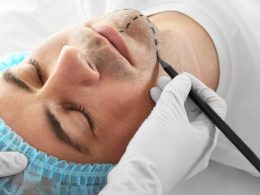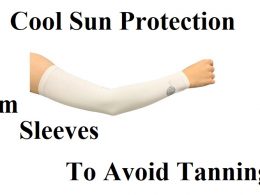Content Summary
- Microbiome and microbiota
- What role does the microbiome play in the skin?
- What determines its composition
- Microbiome and cosmetics
- Microbiome and antibiotics
- skin-gut axis
Microbiome and microbiota
The microbiota is the set of microorganisms that we can find in certain areas of the body such as the skin, mucous membranes or the intestine and that live in symbiosis with living beings where they are while. The term microbiome , on the other hand, refers to the set formed by microorganisms, their genes and their metabolites.
What role does the microbiome play in the skin?
The skin is the largest organ of the human body and as the outer layer of the body, with a thickness of 2 to 3 mm, it functions as both a physical and immunological barrier against injury and infection.
The skin contains various species of bacteria, fungi, mites and viruses. The healthy skin microbiome helps support the skin’s immune barrier function and protects against potential pathogens.
Among the most predominant bacteria we find Gram-positive bacteria: Staphylococcus spp., Corynebacterium spp., Enhydrobacter spp., Micrococcus spp., Cutibacterium spp., and Veillonella spp., although we can also find Gram-negative bacteria.
Among fungi, the genus Malassezia spp. it has been identified as the main genus of commensal skin fungi. Demodex are mites of the Demodicidae family and live in seborrheic areas of the skin, such as the face and hair, on the eyelids and on the nasal wing.
What determines its composition
The temperature and humidity are higher at the level of the groin or armpits while the temperature is lower at the level of the extremities; The density of the sebaceous glands (more numerous on the face and scalp) that secrete lipid compounds and contribute to the acidification of the skin’s pH also varies in different areas of the body . All these characteristics determine the composition, abundance and distribution of species on the surface of the skin, which can vary depending on factors:
- Internal (age, genetic factors, gender, immunity, hormones, sleep, stress, metabolism, natural skin exfoliation)
- External (hygiene, beauty routine, exposure to chemicals, sunlight, climate, physical activity, pollution).
The transition to a state of dysbiosis , that is, when there is an imbalance in the normal microbiome, can be the cause of some type of condition. Modification of the skin microbiota can be associated with dermatological diseases:
- Acne (associated with Cutibacterium),
- Atopic dermatitis
- Pityriasis versicolor (associated with Malassezia)
- Seborrheic dermatitis
- Blepharitis or chalazion (eyelid conditions)
- Rosacea (associated with Demodex)
- Psoriasis
- Skin cancer
- vitiligo
- Lupus erythematosus .
Microbiome and cosmetics
Cosmetics used to improve skin quality and anti-aging can alter the skin’s microbiome, especially when used regularly or long-term, by promoting or inhibiting the growth of certain microorganisms. The use of moisturizing products can cause changes in the microbiome by using lipid compounds or reducing the sebum content in the skin, while the use of inappropriate cosmetics or their incorrect application can cause dysbiosis .
Research is ongoing into formulations containing prebiotics or probiotics (for example, probiotic bacteria of the genus Lactobacillus) to see how they can influence the skin’s microbiome.
Microbiome and antibiotics
The use of antibiotics in the treatment of skin diseases is standard procedure. The correct selection of an antibiotic determines the success of treatment, while limiting its impact on other microorganisms that inhabit the surface of the skin. As an alternative to the use of antibiotics, and still in the experimental phase, microbiome transplantation is being investigated : it would consist of transferring the microbiome from the skin of a healthy individual to a washed and/or disinfected area of the skin of another person with the in order to improve the condition of the latter’s skin. This could mean opening up new possibilities for the treatment of diseases such as atopic dermatitis or bad axillary odour.
skin-gut axis
In the same way as in the skin, there is also a microbiome at the level of the intestine and the study of this skin/intestine axis and its relationship with different diseases is an open field of research.
Thus, alterations in the intestinal microbiome (influenced by diet and lifestyle) could cause dysfunctions, such as rheumatoid arthritis, psoriasis and atopic dermatitis. Celiac disease and gluten sensitivity are also associated with skin lesions, including dermatitis herpetiformis and psoriasis. Atopic dermatitis and food allergy may also be related.
What you should know…
- The healthy skin microbiome helps support the skin’s immune barrier function and protects against potential pathogens.
- Modification of the skin microbiota can be associated with dermatological diseases such as acne (associated with Cutibacterium), atopic dermatitis and pityriasis versicolor (associated with Malassezia), seborrheic dermatitis, blepharitis or chalazion (eyelid conditions) or rosacea (associated with Demodex), psoriasis and even skin cancer, vitiligo or lupus erythematosus.
- Cosmetics used to improve skin quality and anti-aging can alter the skin’s microbiome, especially when used regularly or long-term, by promoting or inhibiting the growth of certain microorganisms.











